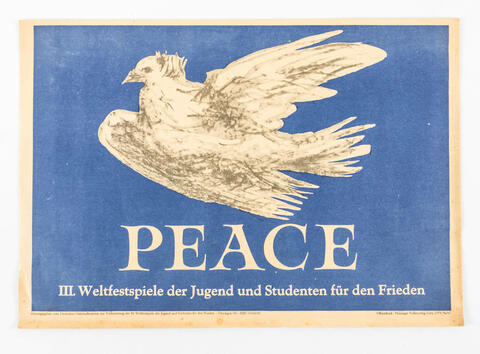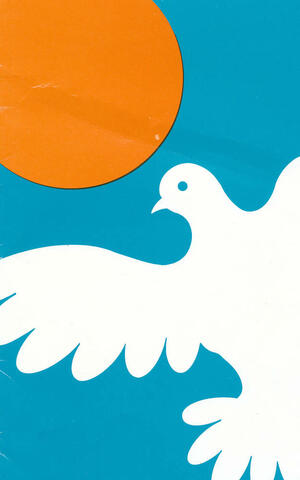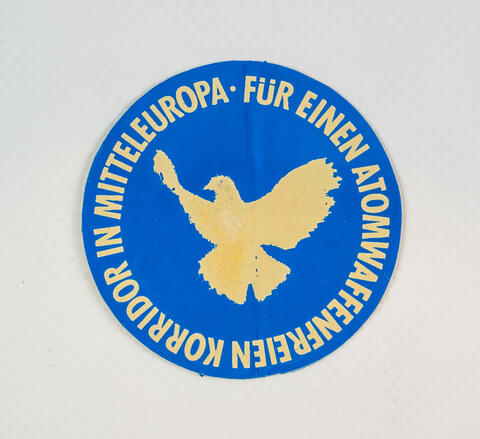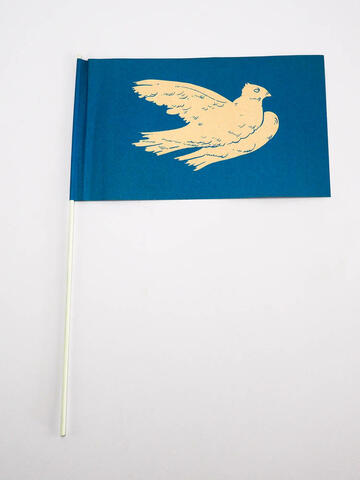What remains?
The Peace Dove
The peace dove was one of the most frequently used political symbols in the DDR. Surprising as it may sound in view of the SED's hostility towards the church, the peace dove goes back to a biblical legend. When Noah looked in vain for land on his ark during the Flood, he sent out a dove. It returned after the first attempt without success. After the second, it carried an olive branch in its beak. So it had sighted land. After the dove flew a third time, it did not return. The waters began to recede and soon Noah's ark landed on dry ground. From then on, the dove was the symbol of reconciliation between God and man.
The peace dove as a symbol of the world peace movement
When a congress of the World Peace Movement was being prepared in Paris in 1949, one of the organisers, the writer Louis Aragon, visited his friend Pablo Picasso. In Picasso's studio, he saw a drawing of a dove that the artist had received as a gift shortly before. Aragon had the brilliant idea of making Picasso's white dove the logo of the International Peace Congress.
The world peace movement controlled by the Soviet Union wanted to signal non-partisanship and independence. A Christian symbol was just what they needed. Thus, the Old Testament bird of a feather fluttered through the imagery of the atheist DDR for decades.
Little white peace dove
A poster of the dove was also the impetus for the kindergarten teacher Erika Schirmer from Nordhausen to write and compose the well-known song of the »Little White Peace Dove«. The simple melody and the plain lyrics made the song catchy for a whole generation. Probably no other song was sung so tirelessly in the DDR, and peace was every other word in the state that was armed to the teeth. Even the inscription »Berlin – City of Peace«, which was put up in the Nikolai District in 1987, did not fit in very well with the barbed wire and the death strip that the DDR used to prevent its population from running away. The DDR propaganda saw no contradiction between the death shots at the border and the designation »City of Peace« for Berlin, since according to the official reading, peace was saved when the Wall was built on 13 August 1961.
Building peace without weapons
The rhetoric of peace stood in stark contrast to the reality of a totally militarised society. This is precisely why the SED regime reacted nervously when the independent peace movement formed under the symbol of »swords to ploughshares«. The peace groups became the nucleus of the movement that led to the Peaceful Revolution and non-violent reunification in autumn 1989. This gave the inscription on the wall of the house in the Nikolai Quarter a new and current meaning.
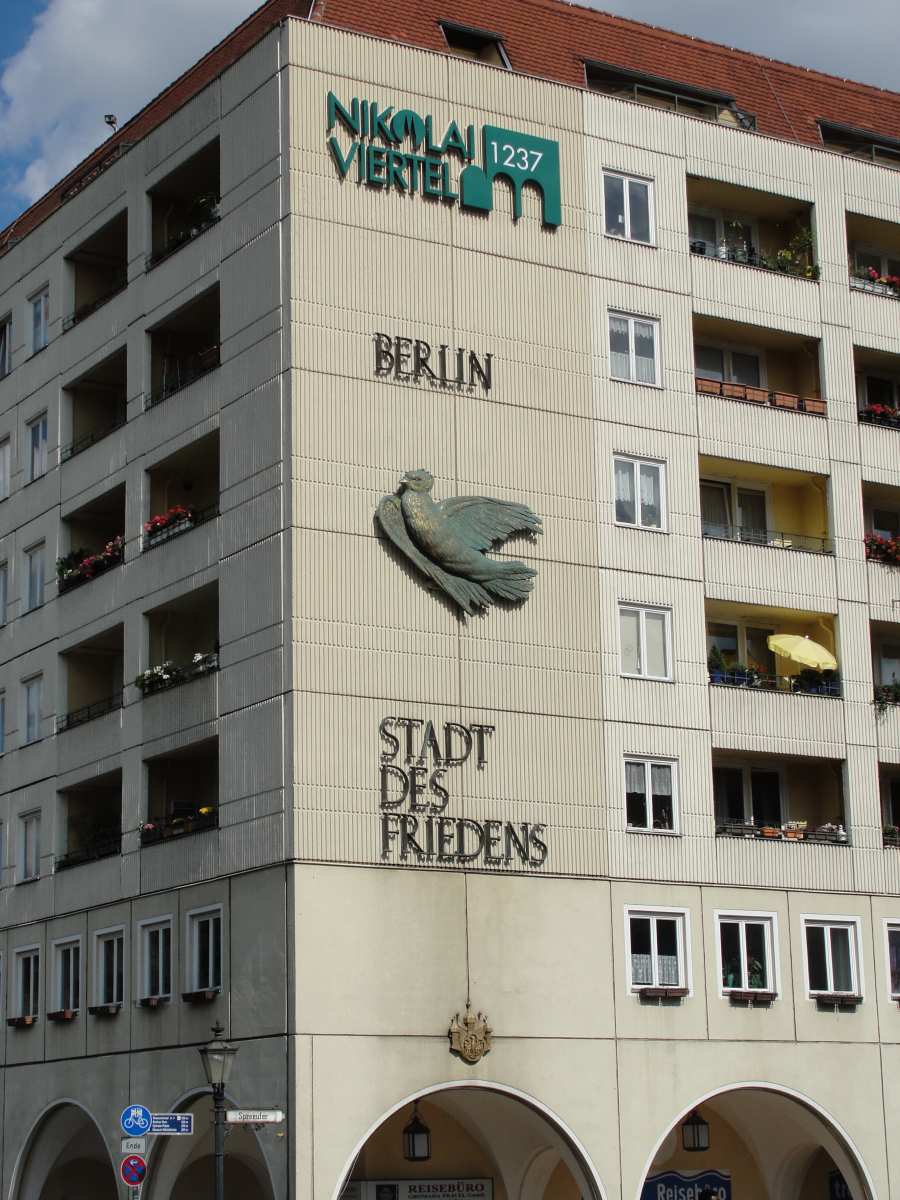
Editor's note: The blog post first appeared on 8.11.2017.
